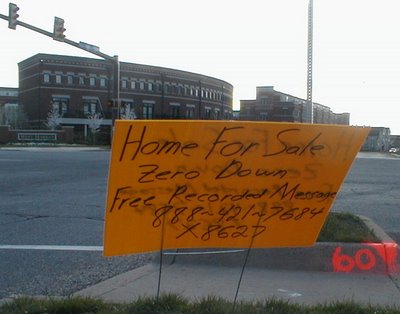Back in 2000 John Burley published a book, called (Australia’s) Money Secrets of the Rich! - Learn the 7 Steps to Financial Freedom. A couple months ago I saw a copy go up for auction on eBay, and decided I’d buy it, even though the shipping cost from Australia would be a bit steep (It turned out that I was the only bidder, and the shipping cost was twice the price of the book!). Oh, the things I do in the service of keeping you informed! In the book’s introduction, Burley makes reference to a US version that was supposedly completed before the Australian edition. When I read that I thought, “Crap! All that shipping cost wasted!” Strangely, though, such a version apparently doesn’t actually exist—at least in published form—yet. Whew!
Before I go into detail about many of the things I don’t like about this book, let me begin by going over what I do like about it: It’s not an awful book. You could do a lot worse than following the advice it contains (most of it, anyway). That having been said, it is plagued with the same problems that permeate all the rest of Burley’s products. Much of the good advice that Burley gives has been said better elsewhere. It over-promises and under-delivers. It’s 450ish pages long, but its core messages can be had—for free, mind you—much more compactly, in various places around the web. If you've been paying attention, you'll no doubt notice that the "7 Steps" in the book are basically a rehashing of the "7 habits" that I've mentioned before. Why not simply read those links and save yourself the $20?
Speaking of that, it seems highly likely that the guy at DPD Marketing is telling the truth when he says that this $20 book contains more useful information than you’ll get at Burley’s $5000 Phoenix boot camp. I base this theory on my prior experience with some of Burley’s other products. This is particularly ironic, given what Burley has to say in chapter 10, Money Step #6: Financial Competence, in a section called “25 Financial Competence Purchasing Techniques.” In item 3, on page 100, Burley writes:
Be aware of the persuasion techniques (‘weapons of influence’) used to get you to spend more. Typical techniques are: exploiting the stereotype of ‘expensive = good’ by inflating prices to make an item seem desirable and/or then discounting it to make it seem a bargain for its quality; the ‘contrast principle’ whereby an expensive or overpriced item is presented and/or sold first in order to lessen the perceived cost and increase the saleability of subsequent cheaper presented items, or options; or the scarcity technique whereby items are marked ‘For 5 days only’ or ‘A limited time only’ or ‘Limited edition’, etc. These are just a few of the many influence techniques described by Robert Cialdini in his groundbreaking book Influence, The Psychology of Persuasion. Be aware of these techniques. [emphasis original]A few pages further on, Burley expands on the “expensive = good” concept, writing:
In western nations we are conditioned that we need to pay more to get more. That precept may seem logical. In fact it is, for the companies selling you products! It is an assumption that sits at the very foundation of advertising. [emphasis original]In Item 10 of Burley’s 25 purchasing techniques Burley writes that it is “lunacy” to ever pay retail. I certainly can’t argue—but here’s the irony to all this: In effect, Burley is counseling his readers to never buy any of the crap he’s selling on his web page, since he himself uses all of the advertising techniques he’s warning you against. This is one bit of Burley advice that I can get fully behind!
The book’s peculiarities start well before chapter 10, however. In its introduction, Burley gets briefly autobiographical:
I was 29 years old, newly married...but despite my well-above-average income, I was broke, in debt and going nowhere fast.Some of the oddities in those paragraphs might simply be chalked up to poor editing. For example, the claim that he was broke at 29, studied money “solidly” for 10 years, and yet could have retired at 32 makes little sense. Maybe it’s a typo, and it should say “1 year,” instead. For what do we know about John Burley?
…
I realized that just making more money was not the answer. I had to learn how to properly manage my money.
…
For the next 10 solid years I made it my mission to locate and study all the information I could find on the subject of money: making it, keeping it, spending it and investing it... I developed, experimented and took action...
…
By age 32 I was in a financial position to be able to retire! I was in a position to be able to live off the positive cash flow from my investments, and if I so desired, never have to work again! [emphasis original]
Burley was 29 in 1990. He was a financial planner (a glorified insurance salesman) making $140K/year, living in Felton, CA. That year he purchased 5 VA foreclosure properties (likely for zero down + VA transaction fees, though about that I’m not entirely sure), quit his, um, financial planning practice, then moved to Phoenix and into a $220,640 home (bought very creatively for zero down using a combination of seller financing and future balloon payments). These are sure ballsy moves for someone who supposedly was broke, deeply in debt, wanted to “properly manage his money,” and didn’t know what he was doing! Needless to say, I am a little incredulous.
I’ll explore this a little more, as well as delve into other sections of the book, in upcoming posts.






